K J Lesker PVD Sputter Coater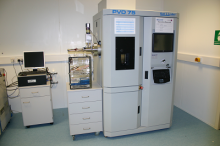
Touch-screen computer controlled R&D level thin film deposition system fitted with KJLC Torus® magnetron sputter sources driven by DC and RF power supplies. This system has a large volume HV chamber and can incorporate substrates upto 4" in diameter. Additional substrate holders are available for smaller sample sizes. Currently being used for Au, Ag, SiO2, ITO, Al, TiO2 & Al2O3, the system can easily be used to deposit a variety of non-hazardous materials. Feature's include simultaneous material deposition, controlled process gas integration and substrate heating.
K J Lesker PVD E-beam Evaporator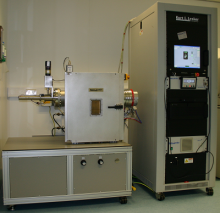
Touch-screen fully computer controlled R&D level thin film deposition system fitted with a four pocket electron beam source. Currently used to deposit Au, Ti, Al, and SiO2, the system can be used with samples up to 9" in diameter. Deposition is computer controlled using quartz crystal monitoring to ensure accurate thickness and rate of deposition.
Edwards 306 Resistance Evaporator
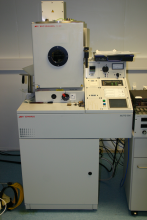
The Edwards/BOC Thermal Evaporator is available to use after a user interface upgrade and automation. This evaporator is used for the deposition of F-RIE compatible metals (Au and Cu free), mainly for hard mask applications. The evaporator vacuum is obtained using a direct drive mechanical pump and turbomolecular pump; ultimate vacuums attained are in the mid 10-7 torr range. The deposition rate is monitored by a calibrated frequency thickness monitor. Resistive thermal evaporation is the most commonly used metal deposition technique. It consists of vaporizing a solid material (pure metal) by heating it to sufficiently high temperatures and recondensing the material onto a cooler substrate to form a thin film. The heating is carried out by passing a large current through a filament container (tungsten boat or material coated tungsten rod), which has a finite electrical resistance.
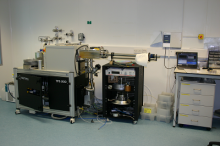
Oxford Instruments Plasma Enhanced Chemical Vapour Deposition (PECVD) Plasma enhanced CVD uses RF energy at 13.56 MHz to generate, ignite, and sustain the glow discharge (plasma) between two parallel electrodes. A precursor gas mixture is introduced in the reactor and plasma is used to create reactive and energetic species by collision. The reactive species diffuse through the sheath to adsorb on and interact with the substrate surface, and a layer of material forms on the substrate surface. Reaction byproducts are then pumped away by the pumping system, typically comprised of a turbomolecular pump and a dry roughing pump.
Beneq Atomic layer deposition system (ALD)
Atomic Layer Deposition (ALD) is a deposition technique which is based on alternating pulsing of two or more precursors. Due to the cyclic nature of ALD, it offers very high thickness control (angstrom resolution), uniformity over large areas and high conformality on non-planar substrates.
Our system is a TFS 200 from Beneq with a reactor that can handle up to 8'' wafers. We currently have the possibility to deposit Al2O3, TiO2 and ZnO using water as the oxygen source. Furthermore the machine has the capability to use O2 and ozone as oxygen sources and a plasma head to do PE-ALD at low temperatures.
We have recently installed a gas cabinet to allow the use of H2S which would allow users to deposit sulphide materials (after agreement with the manager).
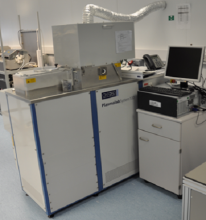
Oxford Instruments Inductively Coupled Plasma Etch (ICP)
ICP RIE etching is an advanced technique designed to deliver high etch rates, high selectivity and low damage processing. Excellent profile control is also provided as the plasma can be maintained at low pressures.
M Braun Glovebox with thermal evaporator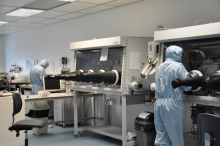
We have a positive pressure M'Braun glovebox system, primarily for making thin films of semiconducting polymer materials. We prepare solutions and spin under a nitrogen atmosphere, with oxygen and water levels limited to less than 10ppm.For making devices, a K J Lesker thermal evaporator system is also available in the same glovebox. This is typically used for metals such as aluminium, gold, chromium and calcium, and also for the low temperature evaporation of organic semiconductor materials such as C60, pentacene and Alq3.

